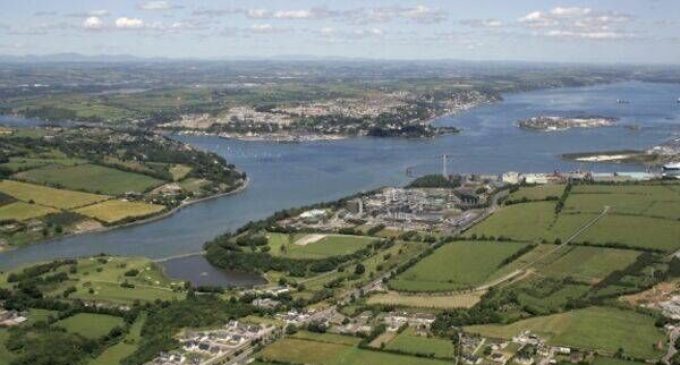Massive Cork Harbour clean-up reaches completion

The Taoiseach has heralded in a new era of recreation, tourism and economic benefits for Cork Harbour following the completion of a massive €144m engineering project to end the discharge of thousands of tonnes of raw sewage into its waters.
Micheál Martin was speaking as he opened the Cork Dockyard pumping station this morning which will transfer raw sewage from thousands of homes and businesses in Cobh town, via a network of pipes under the Lee estuary, for treatment at the Shanbally wastewater treatment plant on the southern side of what is the second-largest natural harbour in the world.
Until now, sewage from Cobh was being discharged untreated through 19 outfall pipes directly to the harbour.
It marks a key milestone in the Cork Lower Harbour Main Drainage Project which began in 2015 when the equivalent of 40,000 wheelie bins of raw sewage from around 20,000 homes and businesses in the lower harbour region was being discharged into the harbour every day.
“This is a historic day for the communities living in and around Cork Lower Harbour, completing a project that ensures a cleaner harbour, and provides new opportunities for sustainable social and economic development,” Mr Martin said.
“We have already seen the benefits that this project has brought to Ringaskiddy, Shanbally, Crosshaven, Carrigaline, Passage West and Monkstown.
“This final stage will add to that improvement – providing further capacity for growth and enhancing the wonderful amenity that is Cork Harbour, the second-largest natural harbour in the world.”
The vast engineering scheme involved the construction of a new wastewater treatment plant at Shanbally, which became operational in late 2016, and the construction of new and upgrading of existing sewer pipes to connect homes and businesses in Crosshaven, Carrigaline and Shanbally to the plant.
Once it became operational, it reduced the daily discharge rate of raw sewage into the harbour by a staggering 30,000 wheelie bins.
But work still had to be done to get the sewage from the Cobh side of the lower harbour to the treatment plant on the southern side.
Last December, engineers marked the completion of a complex drilling project under the Lee estuary – one of the longest horizontal directional drills ever carried out in Ireland – to create bores through which 60-metres of sewer pipes were run.
The Cork Dockyard pumping station will now pump raw sewage from Cobh town through these pipes, under the estuary, to a pumping station in Monkstown, from where it will be pumped to the Shanbally plant, where it will be treated fully before its safe discharge to the harbour.
This now means that all wastewater generated by the thousands of homes in the Ringaskiddy, Crosshaven, Carrigaline; Ringaskiddy village; Passage, Monkstown and Cobh town areas is now being treated in compliance with the urban wastewater treatment directive.
Eamon Gallen, Irish Water’s General Manager, said the completion of the work before certain deadlines has ensured Ireland will avoid potentially massive EU fines which could top €1m daily.
“Cork Harbour is a huge amenity for the people of Cork and Ireland and the harbour is in line for the America’s Cup and now that we have an amenity that is up to international standards, we have a much better chance of looking forward to hosting events like that,” he said.
He said since 2014, Irish Water has pumped €650m into improving water quality in our rivers, lakes and seas, ensuring compliance with Irish and European legislation.
“Well over half of the raw sewage entering waterways in Ireland has now been eliminated and we are on track to fully remove the majority of raw sewage discharges in Ireland by 2025,” he said.
Combined, the projects have ended the untreated discharge of raw sewage from the equivalent of around 120,000 people and the lower harbour scheme accounts for around half of that total.
Source: Irish Examiner







